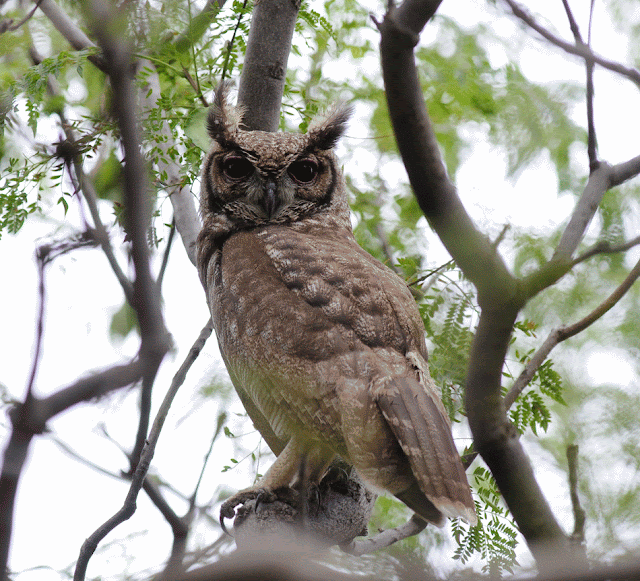We left the wonderful Haile
Resort after a later than usual start at 7am and called in to a nearby area
along the lake shore where a Goliath Heron was seen close by, along with Malachite
and African Pygmy Kingfisher, whilst
a beautiful Grey-headed Kingfisher
was new for the trip.
 |
| Goliath Heron |
Leaving here we drove for an hour or so to Lake Abiata,
one of the famous Rift Valley sites. And what an amazing place this was. There
were literally thousands of Lesser Flamingo’s all the way along the shoreline,
as well as smaller numbers of Greater
Flamingo’s as well.
 |
| Lake Abiata - so many birds to sift through here |
 |
| Lake Abiata |
 |
| Lesser Flamingo's |
The shoreline
was crawling with many species of wader, including numerous Little Stints, hundred upon hundred of Pied Avocet, 1000’s of Ruff, 100’s of Kittlitz’s Plovers, plus smaller numbers of Ringed Plover, Common
Greenshank, Green, Wood and Marsh Sandpipers, a solitary Black-tailed
Godwit and a few Black-winged Stilts.
Overhead was an almost constant stream of Common
Cranes flying in to land on the marshes, and it was such a great surprise
to see 21 Wattled
Cranes flying in as well. To add to all this activity were some African Spoonbills,
lots of Marabou Storks, Yellow-billed Storks, Sacred Ibis, egrets, ducks and the odd Western Marsh Harrier, Pallid Harrier and African Fish Eagle, Gull-billed
Terns, 100’s of Yellow Wagtails
and a single Pallas’s Gull. A
flyover Northern Carmine Bee-eater
was also much appreciated, whilst a few Grassland
Pipits were seen as we left the area.
 |
| African Spoonbills |
 |
| Wattled Cranes - something of a surprise to find 21 at Lake Abiata |
 |
| Wattled Cranes at Lake Abiata |
We had lunch at the Wabe
Shebelle Hotel on the shores of Lake Langano, which is surrounded by some nice trees and is a known stake-out
for Slender-tailed
Nightjar and Greyish Eagle-Owl – both of which obliged.
 |
| Grayish Eagle-Owl |
We also
found Red-throated
Wrynecks to be common, and also saw Little Rock Thrush, Eastern Olivaceous
Warbler, and African Orange-bellied Parrot. We sat on the
veranda of the restaurant which overlooks Lake Langano and watched numerous White-winged Terns flying past in the
strong winds. The odd Whiskered Tern
also passed by, as did a White-rumped
and Little Swift, along with our
first Western Reef Egret.
 |
| African Orange-bellied Parrot |
 |
| Eastern Olivaceous Warbler |
 |
| Rufous-throated Wryneck |
Leaving here we re-entered
Lake Abiata National Park, but from a different entrance and a nice walk
through the acacia forest turned up a couple pairs of the endemic White-winged Black Tit, along with Mouse-coloured Penduline-Tit, Buff-bellied Warbler, Black Scimitarbill and Cinnamon-breasted Bunting.
 |
| White-winged Black Tit - another endemic |
As it was
late afternoon we drove the short distance to our lodge overlooking Lake
Langano and had our first Icterine
Warbler and Ruppell’s Weaver.
























